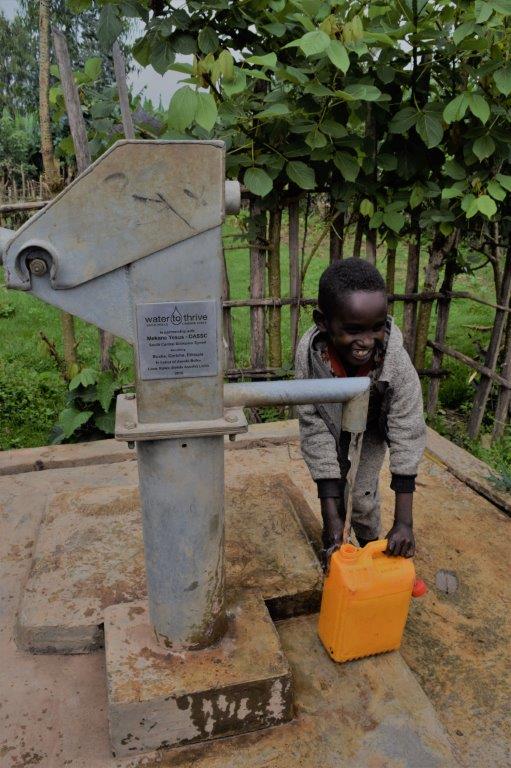
Jugs and cans surround the outside of a Water To Thrive funded well surrounded by barbed wire and a row of homemade bricks.
Photo by Clara G. Herrera
Copyright: AcidNeutral Art LLC
From Clara Herrera:
Kiteto District (TANZANIA) – Swahili and the Maasai language surround us as we make our way on dusty roads – more like trails – to villages that have clean water.
The local government estimates that 36 percent of the population has access to clean drinking water out of its more than 200,000 rural, scattered population.
The rest wash in mud puddles, drink water from sources where animals defecate. The people get sick, and sometimes die.
Here, though, cans, buckets, and anything that can hold water – carried on a head, strapped to a motorcycle or bike – will do.
Barbed wire and sometimes thorny bushes stacked by villagers surround the water pump to protect it from animals or breakage.
They come for miles to get clean water. Some spend the night by the well and leave the next day.
It’s mostly women’s work.
All of this for water.
The human body is an average of 60 percent water.
The Earth is 71 percent water.
Water is life.

Maasai woman pumps water from a well funded by Water To Thrive
Photo by Clara G. Herrera
Copyright: AcidNeutral Art LLC



About The Author: Water to Thrive
More posts by Water to Thrive